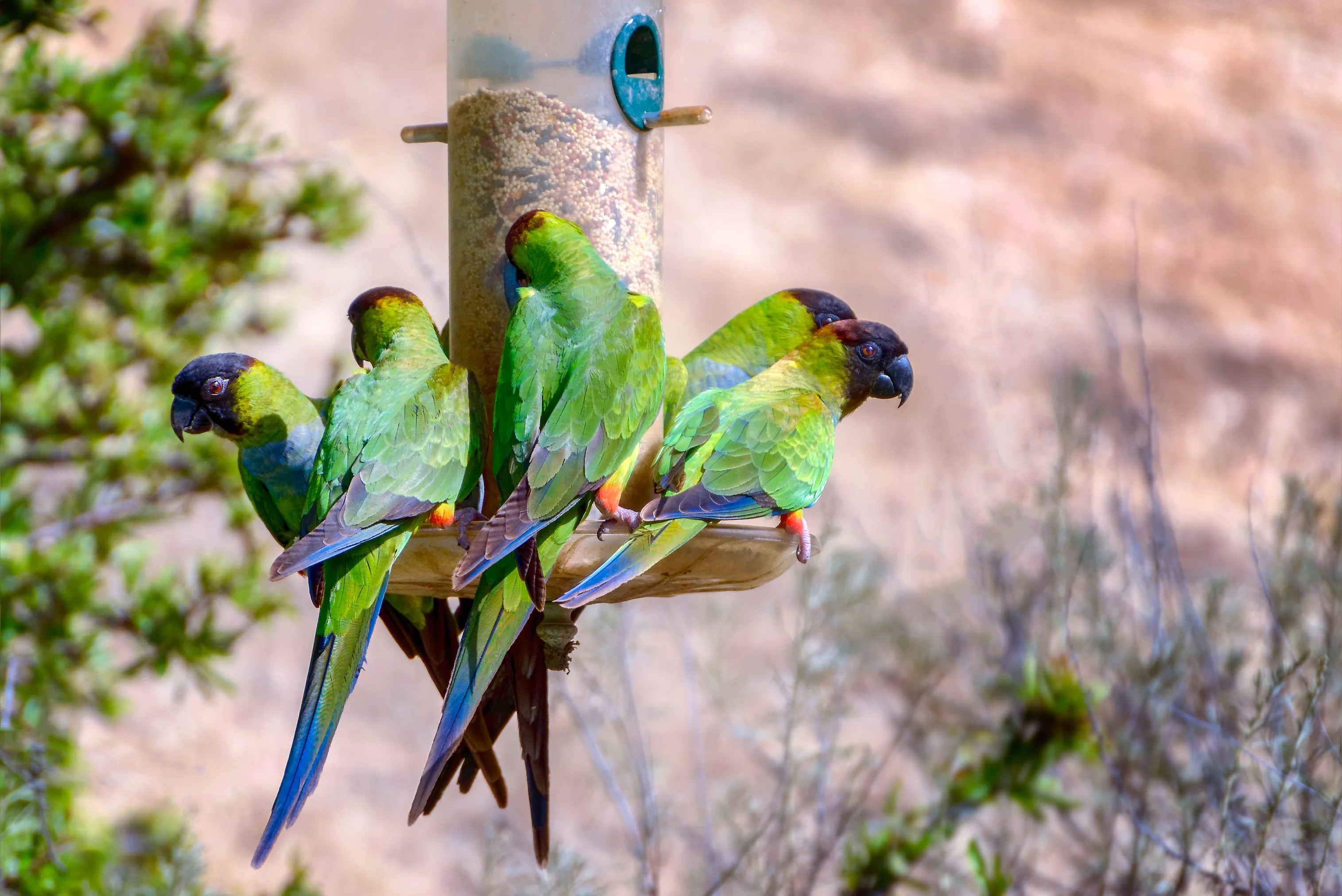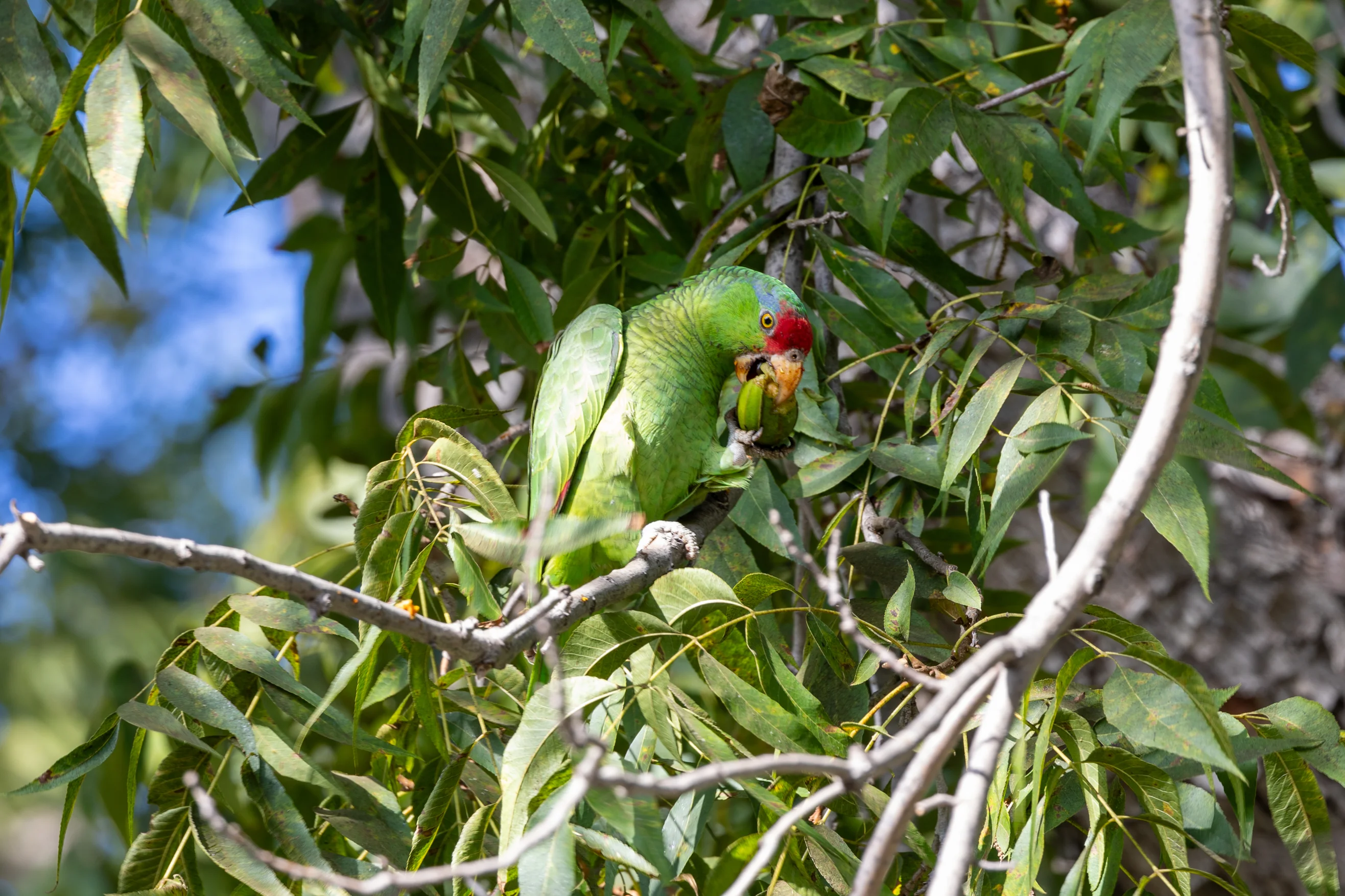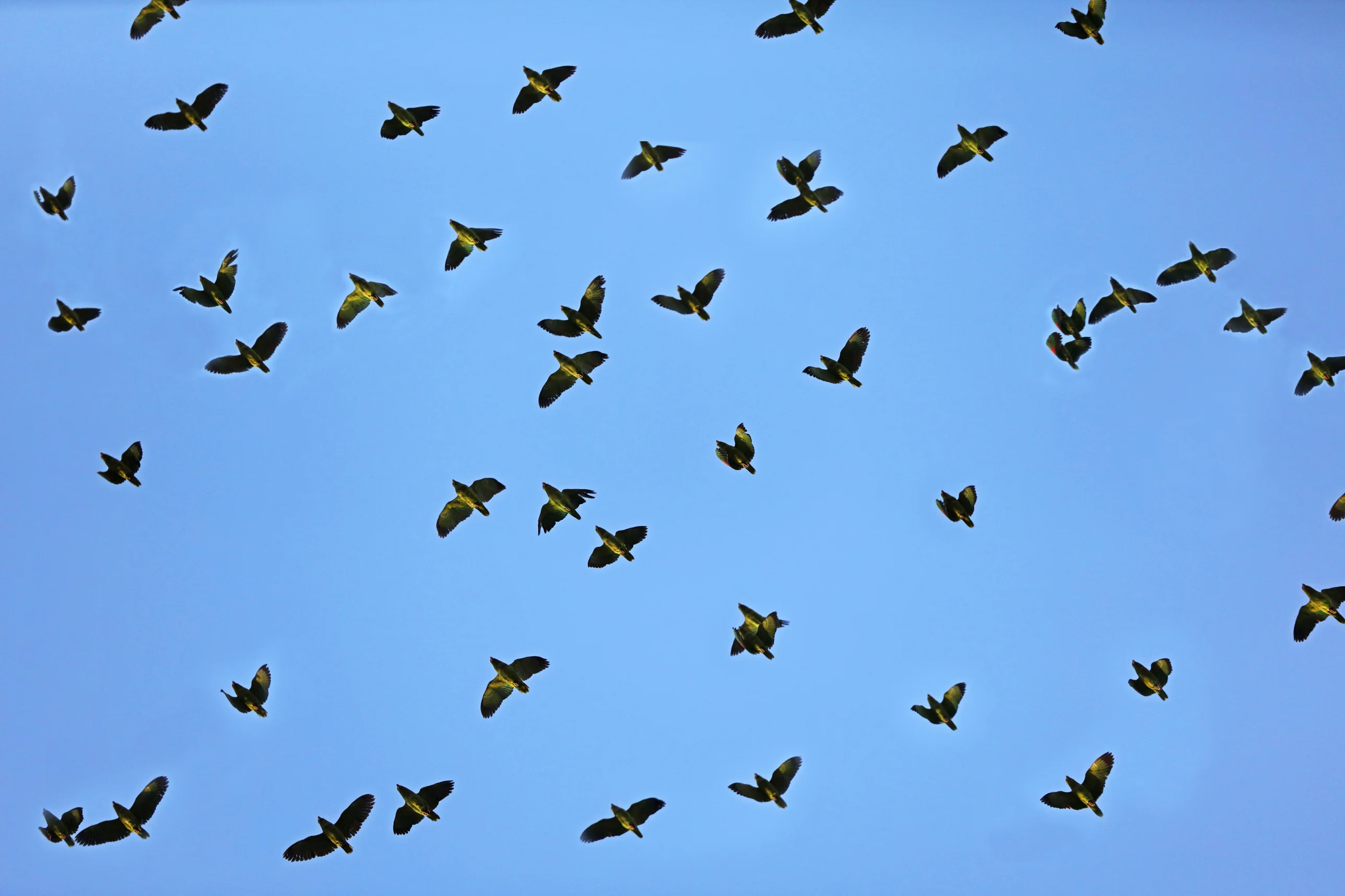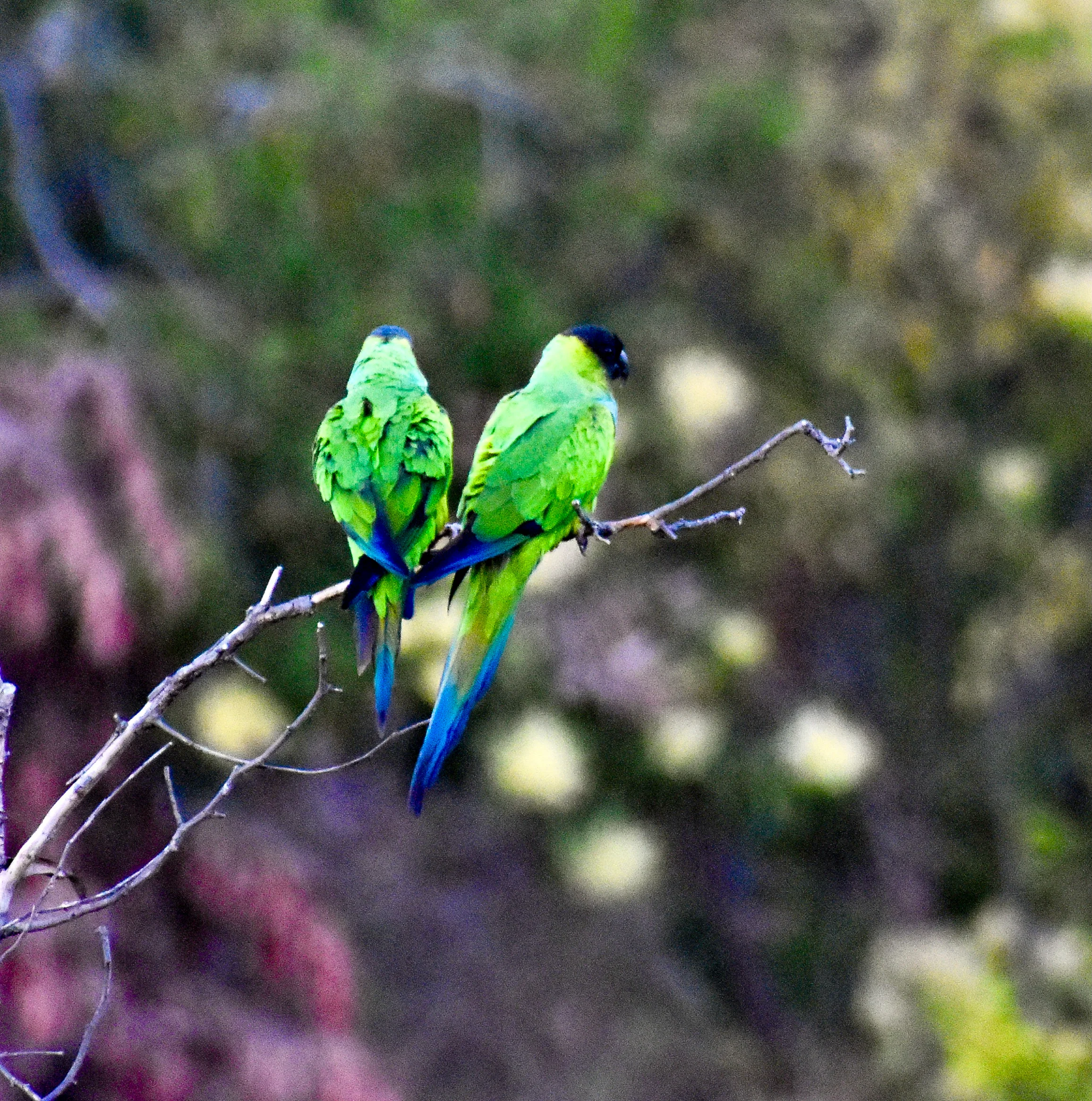The Santa Monica mountains are home to a plethora of iconic and diverse species that truly make this region unique, such as coyotes, quals, bob cats, and mountain lions. But few are as colorful and stand out as much as the bright green parrots that are now so quintessential to the Malibu, Agoura, Westlake, and Thousand Oaks areas that border the mountain range. But many wonder, why are there tropical parrots in the desert chaparral of Southern California? Well in this article we’re going to dive deep into the history, story, and lifestyle of the green parrot that has made this region so colorful over the years.
Origins: From the Pet Trade to the Pacific

It is truly special how these birds, not native to the region, have formed such stable, self-sustaining wild populations over the last seventy years. No one quite knows how these parrots found their home away from home here in the Santa Monica mountains, but the first confirmed sightings were in the late 1950’s. In 1958, the first flock of six green parrots were seen in Monrovia (near Pasadena). By the late 1960’s, reports of these cheerful green birds had spread across Los Angeles, Ventura, Riverside, and San Bernardino Counties. But the question still remains, HOW did these birds end up here? Now while it most likely wasn’t a single event, here are the theorized origins of our colorful friends.
- The 1961 Bel Air Fire - There was a large fire in Bel Air in 1961. Firefighters and Homeowners from homes in the neighborhood release pet parrots to prevent them from perishing in the flames.
- Busch Gardens Zoo (1966-1977) - A once forgotten theme parked in Van Nuys that housed many Tropical birds. At its peak there were 1,500 exotic birds, including 250 amazonian parrots (some of the same that we see here in Southern California today). When the park closed, many of the birds were relocated, but some of these feathered friends likely escaped or we’re “unintentionally” released.
- Pet Trade Accidents and Smuggling Busts - In the mid 20th century, LA was a hub for the exotic bird trade. Smugglers and pet dealers negligently and occasionally released birds to avoid prosecution on a bust. These people were not professional bird handlers, nor were the people buying the birds, so a few most likely escaped during the peak of the bird trade.
It’s not just one type of Parrot! Our colorful Family:

Before doing research for this article, I had always assumed that it was just one species of Parrot but there’s actually a few that inhabit the Santa Monica Mountains and even more throughout the greater Los Angeles area. Today, at least 13 species of parrots live in Southern California. However the most common species in the Santa Monica Mountains include:
- The Nanday Parakeet - Also known as the black-hooded parakeet. The most abundant species in Malibu and Topanga
- The Mitred Parakeet - This bird has an iconic red mask and is known for its rather loud social behavior. This bird often nests in the eucalyptus trees near Point Dume and Kanan Road.
- Red Crowned Amazon - Endangered in Mexico but thriving in California. This bird is occasionally seen joining mixed flocks in western canyons.
- Lilac-crowned Amazon - Although less common, they sometimes are found accompanying the Red Crowned Amazon.
The other species that are sometimes found in the Santa Monica Mountains and Malibu area are the Yellow headed Amazon, Red Lored Amazon, and the Yellow Chevroned Parakeet. However these birds are much more common throughout the greater Los Angeles area.
Why they Thrive So Well

Parrots are highly adaptable, intelligent, and social birds, which has allowed them to thrive in the alien ecosystem of California. Here are some of the key factors leading to their success.
Urban Landscaping - For one, Los Angeles is home to the largest urban natural park in the world, providing an extensive range for these birds to travel, nest, and eat unhindered by much of the bustle of the city. However, even if they do find their way into the city, the buildings and urban sprawl of Los Angeles, Agoura Hills, Westlake and Thousand Oaks, acts as a natural “jungle” so to speak, where buildings replace trees. Additionally in urban and residential areas, many non-native fruiting and flowering trees, such as loquat, palm, fig, and eucalyptus trees, provide abundant food and nesting sites year round
- Climate - The California climate offers mild, frosts-free winters, closely resembling their subtropical environments
- Lack of predators - In their native habitat, these parrots would have to contend with snakes, raptors, and poachers. However here in Southern California, these parrots face minimal to no predation.
- Behavioral Plasticity - Parrots, due to their intelligence, are able to quickly adapt to changing environments and can adjust their foraging, nesting, and social behaviors allowing them to quickly fit in to the urban landscape of Los Angeles.
Endangered Elsewhere
Several of the species iconic to Southern California are ironically endangered in their native habitats.
- The Red Crowned Amazon has been listed as endangered by the IUCN since 1994. This is mainly the cause of loss of habitat and poaching. However there are now more individuals in Southern California than in Mexico. Thanks to the preservation of the Santa Monica Mountains and the lack of predators / poachers
- The Lilac Crowned Amazon has unfortunately had a declining population and was listed as endangered since 2008. Their population is estimated to be around 7,000 world wide.
- The Yellow headed Amazon has been endangered since 1994 and it’s population continues to decrease.
Urban California has become an unintentional refuge for these beautiful birds. Some biologists even suggest that LA’s flocks could serve as genetic reservoirs for reintroduction to their native habitats if the birds face further threats in the future.
Do They Harm the Local Ecosystem?

Despite being non native to the Southern California Landscape, surprisingly these birds have had minimal ecological impact since their introduction. According to Luke Tiller of the Pasadena Audubon Society and the California Department of Fish and Wildlife, there are no recorded conflicts or management concerns with these birds. Their feeding habits focus mostly on non-native plants and they rarely displace native birds. Funnily, the most common complaint against these birds is the noise. In their communal roosts they can reach decibels comparable to traffic, particularly at dawn or dusk.
Buying A Home in Paradise
Why by home in a tropical paradise when the tropical paradise is in your very own backyard? I myself live in the Santa Monica Mountains and am absolutely delighted to find these exotic birds bringing color and music to my home every evening. I am constantly reminded how unique and special of a location this is. Anywhere in Malibu, Westlake Village, and Agoura Hills you can enjoy this tropical and diverse landscape of wildlife. If you are looking to buy a home in those areas, please do not hesitate to reach out. Here at Shen Realty with over 20 years of experience in the business, we promise to provide you with the quality service of the Best Real Estate Agent in Malibu, Agoura Hills, and Westlake Village.